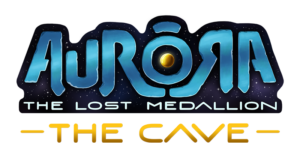‘Jaws of Extinction’ – Interview with Know Your Enemy – Part 1
6 min read
One year later, Gameology News follows up with the development team for their ongoing dedicated work to a unique survival game that offers immersive single player and promises intense multi player action, Jaws of Extinction.
Gameology News: So, it’s been a year now, and we’ve seen Jaws of Extinction go through some major developmental changes. Let’s recap what’s gone on in that time and what are some of the most significant milestones you’ve achieved?
Scrub: I think there’s a number of systems in the game that we’ve seen transformed over the last year, in addition to several new systems we’ve added. Some of the biggest, more “meaty” changes that we’ve seen would be we’ve just re-introduced vehicles back into the game. They were in the prototype in a really early stage and we’re now bringing them back as something much more refined. Ryan’s been doing a lot of really good work on them and we’re looking to expand on that more in the near future. I’ve been doing a lot of work with the new “A.I. v.3” system, which is a new system that allows the infected to do a lot of things they couldn’t do before like open doors, climb on cars, all stuff to make them more terrifying. At least, that’s the plan.
Ryan: We’re also trying to add more detail while at the same time optimizing the world and trying to branch out more than just the Hanouten area. It’s a bit hard when you get done with one area and think to yourself, “Yeah, that’s about done,” and you’re happy with it, then you go back to it and say, “maybe just a little tweak here”. We went through a bout with putting all new cliff faces in and swapping out foliage, just trying to improve the look of the game. Before we expand over the whole of the map we want to stick to one area until we’re happy with the way things look.
GN: I remember once in a developer’s meeting, James, you mentioned about improving the A.I. to allow for improved infected actions, like jumping through the windows at your base, knocking down doors and how that will improve the immersive experience.
Scrub: Yeah, I think fairly soon it’s going to be interesting seeing a lot of the changes in the A.I. regarding base building and player-owned buildings, which is something that’s just now being introduced into the game right now. Like infected climbing through windows and opening doors, a lot of the foundation work is already there; that’s what A.I. v3 was all about really – being able to bring in all those different elements that take the A.I. up to the next level.
Ryan: The main thing you wanted to do by bringing in the new A.I. system was optimisation. You wanted the infected to act and react as smoothly and with as little cost in regards to performance as possible, as well as having all these extreme behaviours that could be used.
Scrub: Yeah, exactly. I mean, a lot of the things like jumping through windows and stuff are very much in line with the direction we’re going in the pretty near-future. It’s all starting to come together, so it’s a pretty exciting time!
GN: How have you had to adjust expectations or change your development process? Are you where you expected to be at this point in time?
Scrub: I think the last year has provided a lot of perspective on some things and we’ve sort of adapted to challenges as they’ve come up. So there are probably some elements that, a year ago, we would think, “Yeah, that’s not going to be difficult,” but then obviously, when you try, it turns out being the most complicated thing in the world. Then there are other things which have gone along quite smoothly, and we find that we want to expand on them into a new direction because, as it turns out, people really liked that kind of thing. So over the course of development there’s an adaptation I think. So I don’t know if it’s fair to say we’re not where we expected to be because our approach has adjusted depending on what we’ve found as the game has evolved thus far, and also taking into account the input of our community.
Ryan: That’s really been sort of the main crux of it. We’ve always been very community-orientated. So while we’ve always had our own personal goals and view of what the game should be, we really encourage our community to provide us with feedback. That way, if something didn’t work out but was well received by the community, we didn’t just scrap out of hand, we would try to implement it a different way. And I feel that things have worked out quite well that way.
GN: Can you elaborate on the challenges you just mentioned?
Scrub: Sure. Like when I consider all of the things, like the individual hurdles, like the specific issues that have popped up and we’ve had to think, “How are we going to solve this?” For example, almost a year ago we spoke about HLODs (Hierarchical Levels of Detail). Even to this day, they’ve been a bit of a bane to us. We’ve tried over and over to use them, and have found other methods and techniques that have suited our needs. So although we haven’t quite managed to crack the HLODs, we’ve adapted to do what we have to do, which is common in game development; You know, looking for solutions to these challenges. And in the case of the HLODs, we’re always working on it, always working towards the most efficient route to optimisation.
Ryan: Oh yeah, we’re always talking about it, discussing the way things are planned for and even into the way we code now. We’ll make sure that everything is as optimised as possible, making sure that nothing is running that doesn’t need to be running, that the NPCs are only talking when there’s a player nearby, all to prevent performance loss. I mean, performance is probably the biggest time-drainers ever, but also one of the most important parts of development. And on that note, the feedback from our community again is very important. That said, we try to stress to folks that whatever information you can provide, machine specs, video settings, hardware, software running in the background, all of that information helps us figure out what works and what doesn’t. Whenever we see folks leaving reviews and comments anywhere, Steam, Discord, or otherwise, we do everything we can to try and help folks who are trying to play the game. It is really hard to address everyone’s issues, but we do whatever we can. I mean, you could take two systems, identical in every way, and the game will run differently on either one. So it’s very time consuming to implement systems and workflows that allow you to make sure that it works as intended on every single machine. But we will get there eventually.
Scrub: Optimisation always stands out though when you talk about challenges. It’s definitely up there as a priority. I mean the idea is to make the game run as well as possible, across as many machines as possible, always.
Ryan: It’s not only that we want people to be able to play it on PCs, but we’ve always planned on releasing to console as well, and there are certain expectations, certain benchmarks, that we have to reach to even be considered for porting. I mean, we’ve got to go that way anyway, so no one has to worry that we’ll be leaving performance behind and focusing on content, content, content. So every patch we release includes content, but also includes fixes, performance tweaks, and mechanic improvements.
Jaws of Extinction Discord: https://discord.gg/joegame



